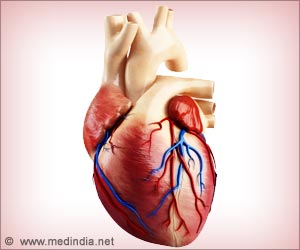Highlights:
- Real-time 3D simulation of heart electrical activity can now be done on high-end smartphones or tablet computers using software and graphics processing chips that are designed to run on common internet browsers such as Google Chrome and Firefox
- Until recently, 3D simulation of heart activity involving the interaction of millions of heart cells could only be done on powerful clusters of computers or supercomputers
- New simulation tool can be used by clinicians to diagnose and treat complex and serious rhythm disturbances of the heart and even individualize treatment to suit each patient
Read More..
How Does the Web Tool Work?
- The web tool developed by the study team uses Web Graphics Library (WebGL 2.0) and can work on most of the operating systems, ex: Windows, Mac (Apple OS) and Linux
- WebGL is a software application that enables program developers to display interactive and real-time 3D graphics in the web browser. WebGL finds several applications including interactive mobile and computer games, music videos, data visualization, 3D design environments, 3D modeling of space and objects, art, and plotting complex mathematical functions
- The creation of 3D and interactive computer graphics is done through graphics processing units (GPUs) developed to display graphics and videos. With the rising popularity of interactive and 3D video games, the versatility and scope of the GPUs has reached a new level to enable processing of multiple tasks simultaneously and to improve user/gaming experience
- High-end smartphones contain up to 900 GPU cores, while laptop or desktop computers may contain more than 5,000 GPUs. Every single GPU core can simultaneously process simulation data and the multiple parallel processing enhances the quality of the display
- Thus, the team has harnessed the power of the GPUs to enable 3D simulation of the heart activity on tablets and smartphones
- However, the team had to overcome a hurdle of sorts. Normally, the software for GPUs differs according to the manufacturer and the type of chip used. To enable the graphics and simulations to run on any device, Research Scientist Abouzar Kaboudian developed programs in WebGL that work on most of the common browsers such as Windows and Mac. Through the browser, the graphic tools can run the simulations on a variety of tablets, phones and computers without the need to install new software.
Scope and Merits of the Graphics Simulation Tool
- Resources that were previously only available to a select few would now be accessible to many more persons
- The tool can improve arrhythmia treatments beyond what is available currently, such as drugs and implantable devices and improve patient outcome
- Doctors can use the tool on tablet computers to diagnose and treat patients
- The tool can also be applied for 3D simulations in other areas including chemical reactions, geophysical forces, fluid flow, and crystal growth.
- With a device such as a tablet or a computer and access to internet, any simulation can be run on the device at an accelerated rate due to the program library developed by the team
- The cost of the simulation tool is a fraction of the cost of using supercomputers or computer clusters and makes the tool more accessible and affordable
Summary
New web tool allows real-time simulation of heart activity on any device such as high-end smartphones or tablets and can be used by doctors to provide personalized treatment to patients with serious arrhythmias for a better outcome.References:
- Using Smartphones and Laptops to Simulate Deadly Heart Arrhythmias - (http://www.rh.gatech.edu/news/619757/using-smartphones-and-laptops-simulate-deadly-heart-arrhythmias)
Source-Medindia














